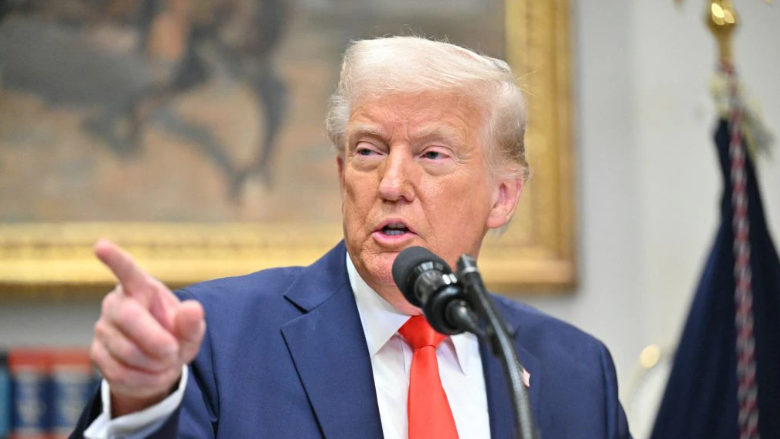Trump Preparing To Sign Order To ‘Facilitate The Closure’ Of The Education Department
President Donald Trump is set to sign an executive order that will initiate the process of dismantling the Department of Education, a move that aligns with his long-held commitment to reducing the federal government’s role in education and restoring authority to states and local communities. This decision marks a significant shift in how education policy is managed in the United States, reflecting a broader conservative push to limit federal overreach and return power to the people.
According to sources familiar with the draft, the order will direct newly appointed Education Secretary Linda McMahon to take all necessary steps to facilitate the closure of the Education Department to the maximum extent permitted by law. McMahon, who was confirmed earlier this week, has already indicated her commitment to this goal, stating that it is time for states and parents to reclaim their rightful role in determining educational standards, free from the bureaucratic interference of Washington.
For years, conservatives have criticized the Department of Education as an unnecessary federal bureaucracy that imposes top-down mandates on schools, dictates curriculum standards, and enforces policies that often conflict with the values of parents and local educators. Trump has long argued that education should be handled at the state and local levels, allowing communities to tailor policies that best serve their students rather than being forced to comply with one-size-fits-all regulations from unelected federal officials.
While this executive order will mark a significant step toward reducing federal influence over education, fully abolishing the department would require congressional approval. Legal analysts point out that such an effort would likely face resistance from Democrats in the Senate, where a filibuster-proof 60-vote majority would be required to pass any legislation eliminating the agency. Despite this challenge, Trump’s order is expected to take immediate steps to cut down the department’s functions, redirect funding, and transfer responsibilities to the states.
In anticipation of this shift, the Department of Education has already begun scaling back a number of controversial initiatives. One of the most significant moves so far has been the termination of more than $600 million in federal grants tied to programs promoting Critical Race Theory and Diversity, Equity, and Inclusion (DEI) initiatives. These programs, which were heavily funded during the previous administration, have been widely criticized by conservatives for injecting leftist ideology into the classroom and fostering division among students.
In addition to defunding these controversial programs, the administration is also reviewing a range of federal education policies to determine which regulations can be repealed or significantly weakened without congressional approval. By rolling back these policies, the administration aims to reduce burdensome federal mandates that schools have had to comply with for decades, giving states greater freedom to set their own education priorities.
The push to eliminate the Department of Education has been a long-standing goal of many conservatives, dating back to the Reagan era. Established in 1979 under the Carter administration, the department has grown in size and scope over the decades, despite ongoing debates over its necessity. Critics argue that it has done little to improve student performance, pointing to stagnant test scores and declining educational outcomes despite billions in federal spending.
By signing this executive order, President Trump is making good on a promise to put parents and local communities back in charge of education. Supporters of the move see it as a necessary step toward restoring American education to its foundational principles, where schools are accountable to families and communities rather than Washington bureaucrats. This decision will undoubtedly face pushback from the left, which sees federal oversight as essential to ensuring educational equity. However, conservatives argue that the best way to ensure quality education for all students is by empowering parents, reducing government interference, and prioritizing academic excellence over political indoctrination.
As the administration moves forward with this historic initiative, states will likely play a more prominent role in shaping the future of education policy. With federal control diminishing, governors, state legislatures, and local school boards will have the opportunity to craft policies that better reflect the needs of their communities. This shift is expected to lead to greater innovation, higher academic standards, and increased school choice options for families who seek alternatives to the public school system.
Trump’s decision to move forward with dismantling the Department of Education underscores his commitment to putting America First in education, ensuring that students receive a quality education free from federal interference. Whether or not Congress ultimately approves the full closure of the department, this executive action represents a major victory for conservatives who have long fought against Washington’s grip on the nation’s schools. The road ahead may be challenging, but this marks a bold step toward returning education to the people who know what’s best for their children—the parents, teachers, and communities of America.

